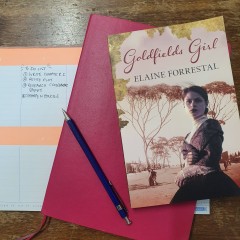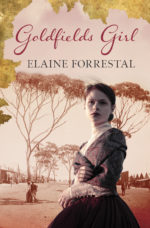Author Elaine Forrestal shares her top tips for how to make the most of ‘disappearing down the rabbit hole of research’ when writing historical fiction

I’m Elaine Forrestal and Goldfields Girl is my latest historical fiction for students, teachers and history buffs of any age. My fiction, in various genres, has been published since 1983. This is my third historical fiction novel. In this blog post I will share my top tips for using your local, state or national library to do research.
Where to start?
Try Mr Google, but remember his information is not always 100% reliable. The first time I put the name of WA-based pirate Black Jack Anderson into a Google search I got 60 pages of blackjack the card game, and lots of Andersons researching their family trees. Not a single pirate!
Who can you ask for help?
Go to ‘Ask a Librarian’ under ‘Getting Started’ in the ‘Using the Library’ section on the website of the National Library of Australia or the equivalent in your own state library. In Western Australia, we also have the Battye Library, which specialises in WA history, but holds material from other Australian states and territories as well. That’s where I did end up finding Black Jack Anderson. In their collection there was not one, but five invaluable leads for me to follow. In my research for Goldfields Girl, I was looking for the elusive journal of Clara Saunders, which was mentioned obliquely on Google and in the book Daughters of Midas by Norma King, but these did not give any reference for the source. I finally found an unpublished transcript of it under the name of C. Paton at the Battye Library. I felt like a detective who had solved a very difficult case! But if it hadn’t been for the patience and expertise of the Battye Library staff who helped me, Clara’s story would still not be accessible to everyone.
What are the pitfalls?
Firstly, you often don’t know where to focus your research until after you have started writing the story. The writing and the research need to go hand in hand, moving each other forward, adding and changing as the story unfolds. Spend some time ‘reading around’ your subject. And don’t be afraid to abandon one line of research to follow another as the picture becomes clearer. Remember to keep detailed records of the every reference you find, though. Sometimes what you thought was a false lead turns out to be the one you need after all.
What can I do while I’m working from home?
Keep writing! Establish a routine that works for you and stick to it. Walk on the beach, breakfast, shower and dress for work – that’s my routine. It works for me, but not for everyone. Pick a time of day when you can focus best and keep writing for as long as you can. Explore related books, magazine articles and old newspapers, many of which, through Trove, are online.
In conclusion
For me, those research phases of my books are endlessly fascinating. One of my friends, who also writes historical fiction, calls it ‘disappearing down the rabbit hole of research’. You never know where those branching tunnels will take you, but there is always something interesting to discover.
Goldfields Girl can be purchased from all good bookstores and online.
Buy the book.
Read a sample chapter.
Download a Goldfields Girl crossword puzzle.







